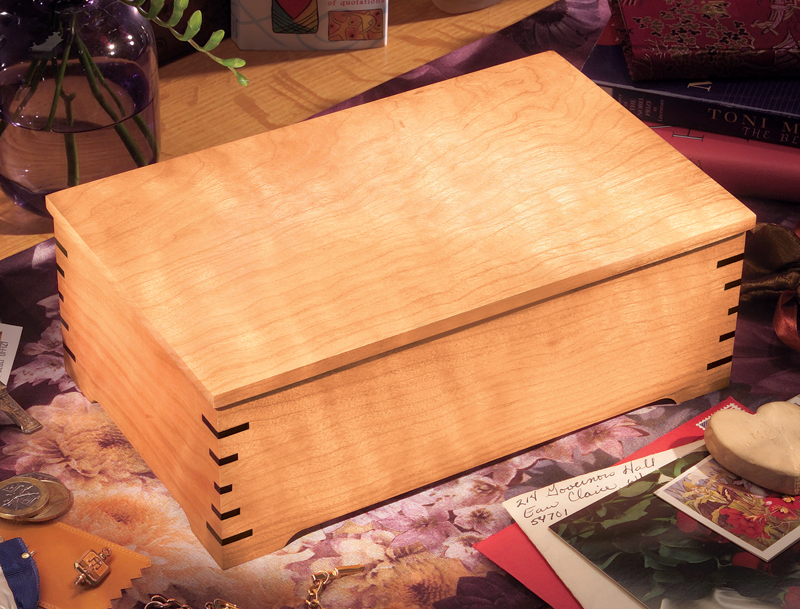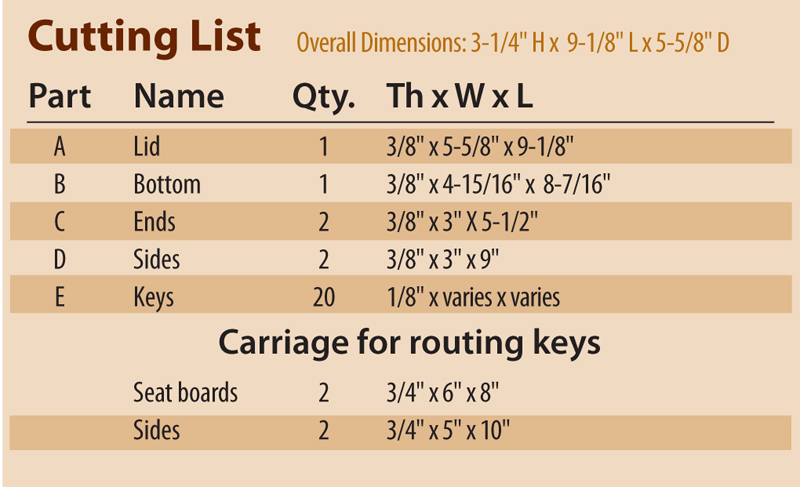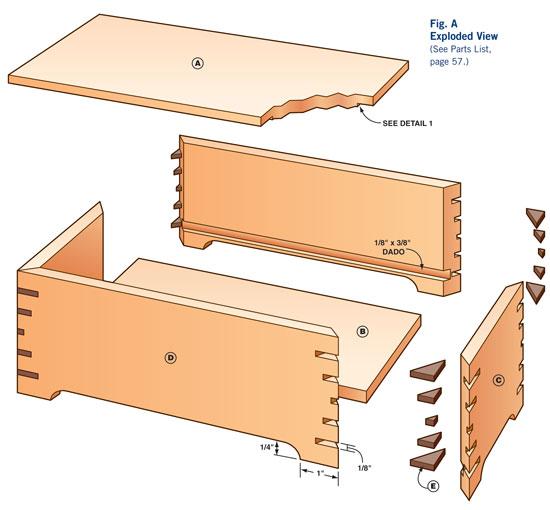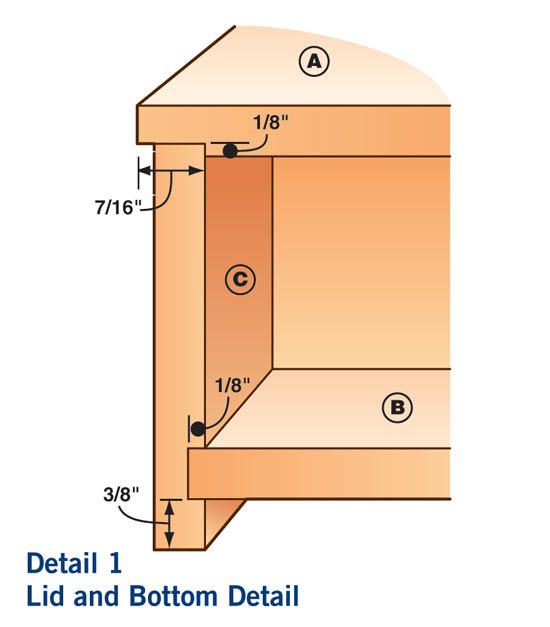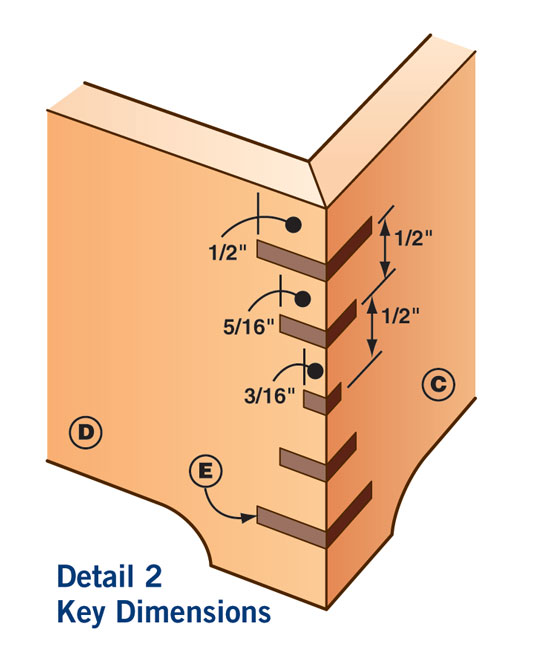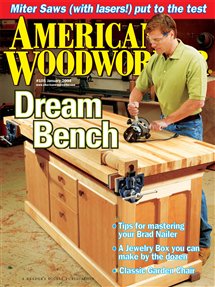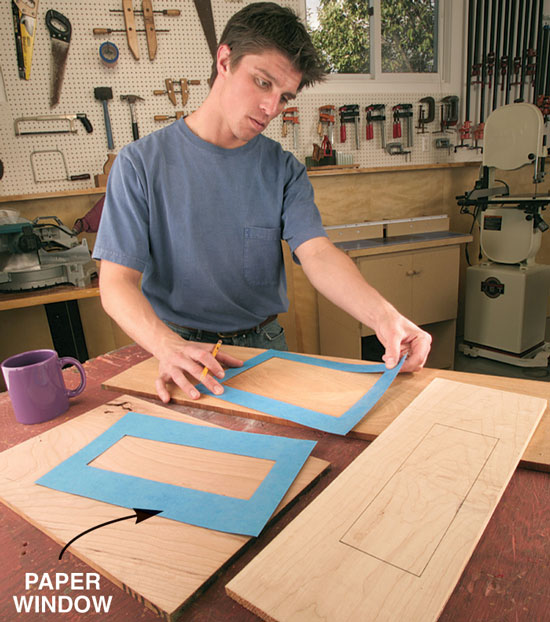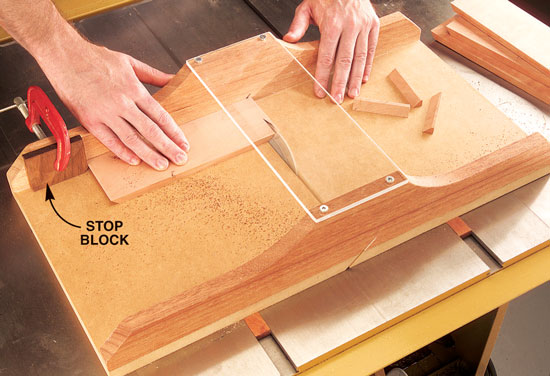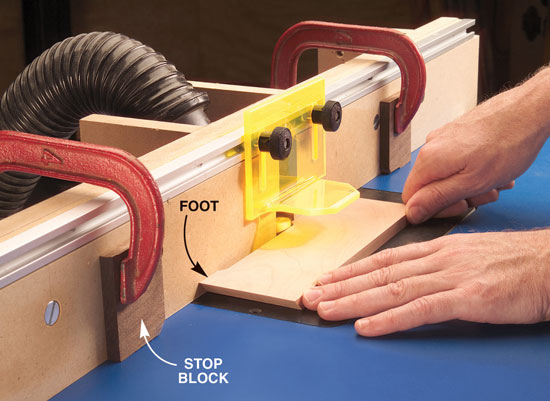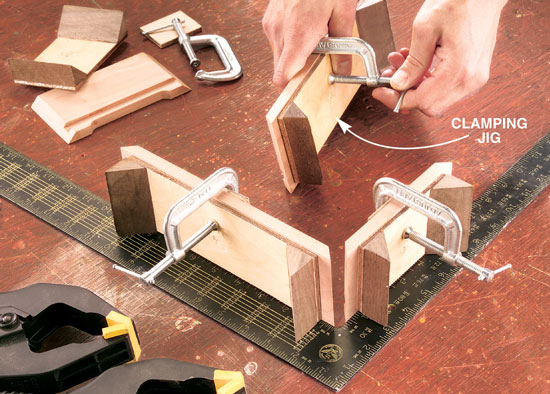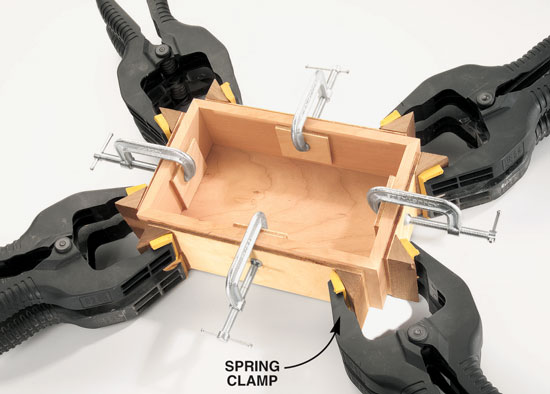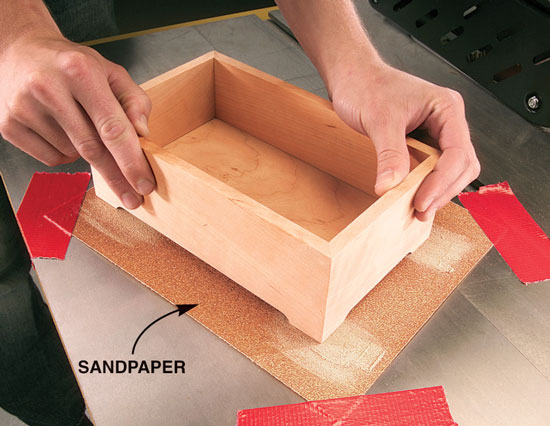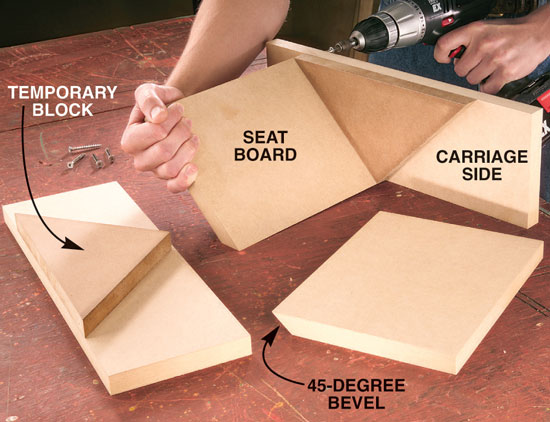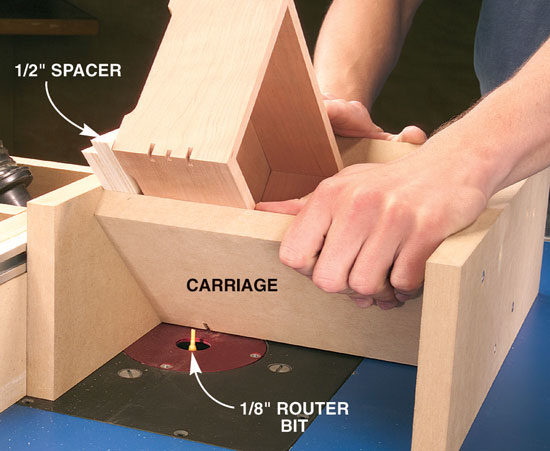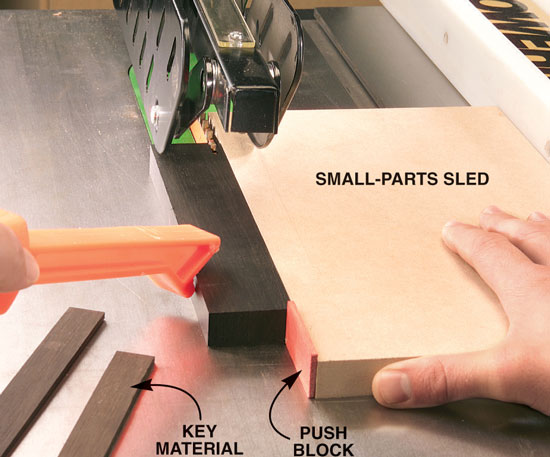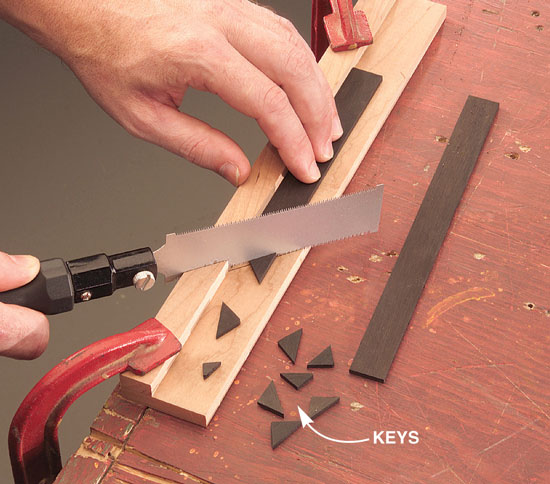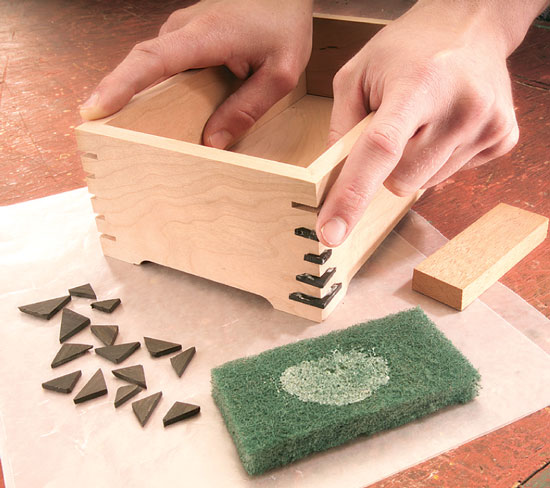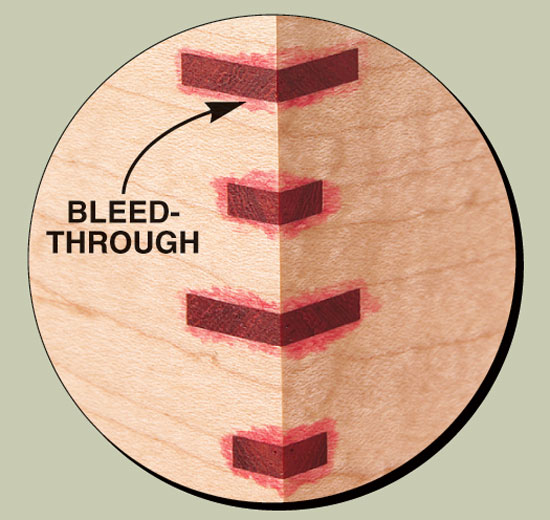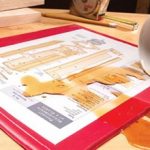We may receive a commission when you use our affiliate links. However, this does not impact our recommendations.
Keepsake Box
Build them in bunches and avoid gift shopping this year.
By Mac Wentz
As the holidays approach, my thoughts turn to how I can weasel out of gift shopping. And this year I have the perfect scheme: While the malls are jammed with poor saps, I’ll be in my shop blissfully building these boxes for everyone on my list.
When they marvel at the elegant keyed joinery at the corners, I won’t mention how fast and easy these boxes are to make. Making the jigs and resawing lumber takes a few hours, but once you’re set up you can churn out three or four boxes in a day. There’s no need to mention how cheap the materials are either. If you stick with common species like oak, cherry or maple, each box should cost less than $25.
Tools and materials
The box shown at left is made from 3/8″ thick wood, so I used a bandsaw for resawing and a planer to take the wood to final thickness.
If you don’t have a bandsaw and planer you can also mail order 3/8″ wood (see Sources, below). You’ll also need a tablesaw, belt sander, router table, 1/8″ and 3/4″ straight router bits and some 3″ spring clamps.
Start with grain selection
Grain pattern has a big influence on the appearance of a small project like this box, so don’t just rip up boards and leave it to chance. Begin by making paper windows that let you preview the look of the box parts (Photo 1). I generally use finer, straighter-grained material for the ends and sides and a more dramatic pattern for the top. This is not a hard and fast rule, so experiment until you get something you like. Grain pattern for the bottom isn’t critical, since it doesn’t show. For the keys I use a different color wood so they contrast with the box.
Cut the sides
I strongly recommend you miter the box sides on a tablesaw using a tablesaw sled (Photo 2). The every-time accuracy of a well-made tablesaw sled is hard to beat. In fact, I built a small one just for building these boxes. Cut the parts for the ends and sides and make an extra set to test your machine setups later on.
Next cut the dadoes in the ends and sides for the bottom (Fig. A, below). The dadoes should be wide enough to provide an easy fit for the bottom. Now select two ends and two sides that have the least attractive grain and mark them “GP” for guinea pig. These GP parts are the first to go through each step in the machining process and hopefully the only ones to suffer from setup mistakes. Beginning with the GP parts, rout the relief in the bottom of the ends and sides to form the corner feet using a 3/4″ straight router bit in your router table (Photo 3).
The bottom and top
Cut the bottom for the box next. The bottom is about 1/16″ undersize to give it some room for expansion. Next cut the top but don’t cut the rabbets until the box is assembled. That way you can custom fit the top for a snug-but-not-too-snug fit.
Clamping jigs
Assembling the box begins by making a set of clamping jigs. They are simply made from scraps of 1/4″ plywood that have 45° beveled blocks glued to them (Photo 4). Make them 3/4″ shorter than the outer dimensions of the box so they don’t interfere with assembly. The advantage of these clamping jigs over other clamping methods is that you can deal with each joint independently, avoiding the frantic rush of trying to align, clamp and square all the corners at once.
Do a full dry assembly to make sure the jigs and box parts come together correctly. Then disassemble the box and sand the bottom and the inner surfaces of the ends and sides. Add the jigs, glue and spring clamps to the miters (Photo 5). Assemble a guinea pig box too, using the GP parts. Once the glue is dry you can level the feet (if they need it) on a piece of sandpaper (Photo 6).
Cut corner slots with a carriage
To cut slots through the box corners, build a carriage that holds the box at a 45° angle as it passes over the 1/8″ router bit. The carriage is just four pieces of plywood or MDF. See the Cutting List, below, for dimensions. The two seat boards have a 45° bevel on the bottom edge (Photo 7). For stability and safety, I like a carriage that’s wider than the box.
Assuming your carriage is made from 3/4″ material, set your router table fence 2-1/4″ from the center of the 1/8″ router bit. This will position a slot right in the middle of the box. Cut all four middle slots. Then use a 1/2″ spacer board to reposition the box for the next set of slots (Photo 8). Use a second spacer board for the final set of slots. Using spacer boards eliminates the need to move the router table fence for each set of slots. You will, however, have to reset the height of your router bit for each set of slots and this may require some trial and error testing. This is where the guinea pig box comes in handy.
Cut, glue and sand keys
Rip the 1/8″-thick key material using a small-parts sled on your tablesaw (Photo 9). Cut scrap material first, readjusting the fence until you end up with key material that slips smoothly into the slots in the corners of the box. Make sure to use a zero-clearance insert to prevent the strips from falling down into the saw next to the blade.
Cut the key material into triangles with your bandsaw or a small handsaw (Photo 10). Cut the triangles about 1/8″ oversize. When gluing the triangles in place, use glue sparingly and make sure you fully seat each key into its slot (Photo 11).
Sanding the keys flush with the box sides is fun because you finally see the decorative effect. It’s also scary because it’s easy to mess up a mitered corner or gouge a side of the box. My tool of choice for this operation is a belt sander mounted upside down on my bench and equipped with a 120-grit belt. To prevent gouging make sure to keep the box parallel with the sanding belt when sanding.
Finishing touches
All the boxes shown in this article got a final sanding with 180-grit sandpaper followed by a couple coats of spray lacquer. Spray lacquer is available at hardware stores for about $9 per can. One can is enough for three or four boxes.
Sources
(Note: Product availability and costs are subject to change since original publication date.)
Grizzly Industrial, Inc., grizzly.com, 800-523-4777, 1/8″ router bit, #C1693; 3″ spring clamps, set of 6, #G8218.
Rockler Woodworking and Hardware, rockler.com, 800-279-4441, 3/8″ thick lumber.
Cutting List
Fig. A: Exploded View
Detail 1: Lid and Bottom Detail
Detail 2: Key Dimensions
This story originally appeared in American Woodworker January 2004, issue #105.
Click any image to view a larger version.
1. Lay out the box parts exactly where you want them using a paper window. The window helps you see the grain patterns for each part before you cut them to final size.
2. Miter the box ends and sides on your tablesaw with the help of a tablesaw sled. Miter one end of all the pieces first. Then clamp a stop block to the sled when cutting the other ends.
3. Create feet on the sides and end by using a 3/4-in. straight bit in your router table. Set up a pair of stop blocks to limit the length of the cut. To prevent the grain from chipping out at the feet, make three passes, raising the bit about 1/8 in. after each pass.
4. Attach clamping jigs to the ends and sides of the box. The jigs are a bit shorter than the parts so they don’t interfere with the joint during assembly.
5. Add spring clamps to one corner at a time. Square the parts by adjusting the position of the spring clamps. Let the glue set for a few minutes before adding the bottom and the last side. Double-check that all the parts are square.
6. If the box rocks, level the feet on a sheet of 80-grit sandpaper. The top of the box can be leveled in the same way, if it needs it. Follow up with finer grits.
7. Build a carriage to support the box while cutting the corner slots for the keys. Screw temporary 90-degree blocks to the carriage sides and use the blocks to position the seat boards so their beveled ends just touch. Remove the 90-degree blocks before using the carriage.
8. Rout the key slots through the mitered corners. Cut the center slots first. Then raise the bit for the slots next to the center slot and add a 1/2-in. spacer to position the box for these slots. Finally add a second spacer and raise the bit for the top and bottom slots and cut them.
9. Saw wood strips for the keys using a small-parts sled; simply a rectangular scrap with a small block glued to one corner. Use a zero-clearance insert for this job to prevent the strips from falling down into the saw next to the blade.
10. Cut the triangular keys with a bandsaw or small handsaw. Lay out the triangles on the wood strip as shown here. This way the grain will run in the same direction for all the keys.
11. Glue the keys into the slots. Be sure the keys completely seat to the bottom of the slots or you will end up with gaps. Keep a small block handy so you can push in any stubborn keys.
Oops!
One of the things I love about making boxes is that I can experiment with exotic woods without spending a bundle. But unfamiliar woods can lead to unexpected problems. When I gave this box a coat of spray lacquer, the red padauk keys bled into the surrounding finish, making a pink mess. So I sanded off the lacquer and tried again. Two very light coats of lacquer, about 10 minutes apart, sealed the padauk and I was able to follow up with a normal coat about 20 minutes later. Lesson learned: When trying a new wood I test the finish on my guinea pig box first.
Here are some supplies and tools we find essential in our everyday work around the shop. We may receive a commission from sales referred by our links; however, we have carefully selected these products for their usefulness and quality.



